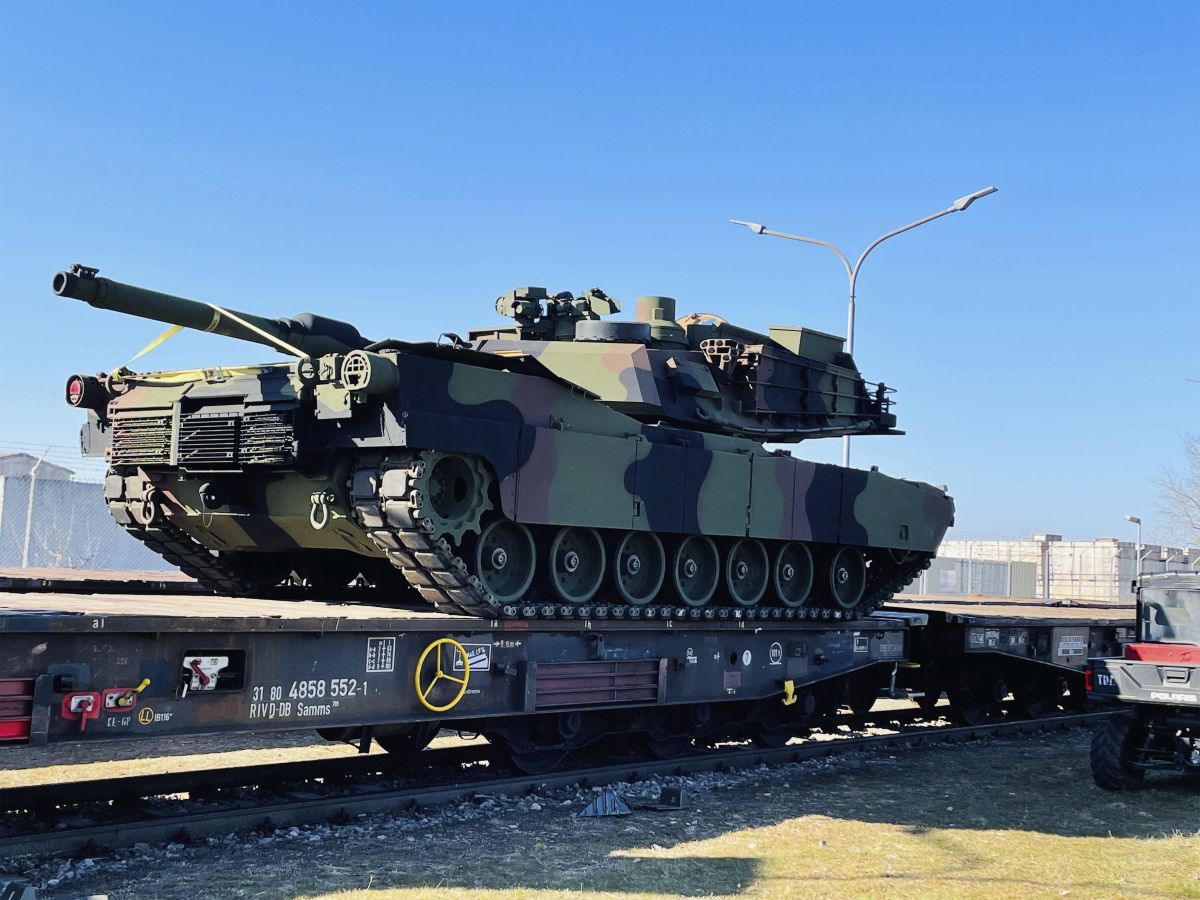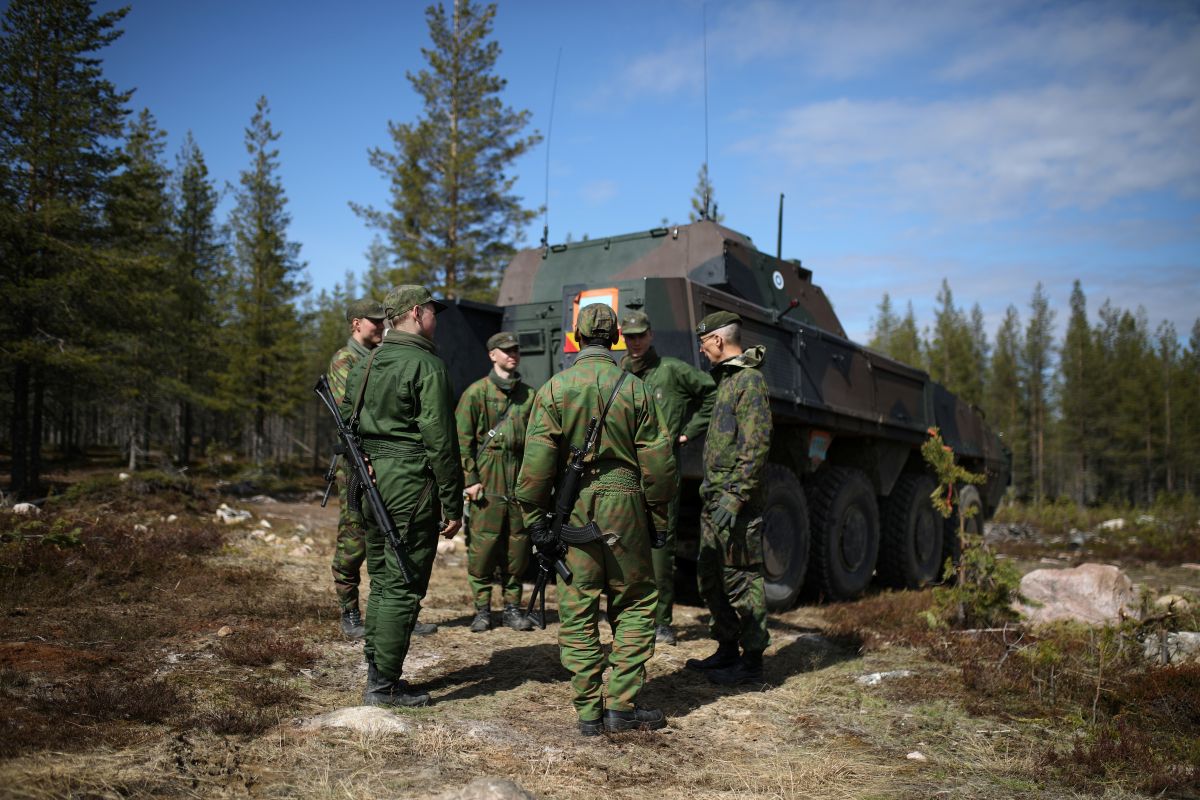U.S. Increases Military Presence in Europe
In the face of the Russian invasion of Ukraine, the U.S. has substantially increased its military presence in Europe, including on NATO’s Eastern Flank, although most of the additional deployments have been so far of a temporary nature. It is not clear whether the U.S. will opt to significantly strengthen its forces in Europe in the long term over the state in late 2021, given that Russia is being weakened by the war and NATO members announcing increased defence investments. Without substantial U.S. involvement, however, it will not be possible to adequately enhance NATO’s deterrence and defence against Russia, which will be determined to rebuild its armed forces.
 Maj. Allan Laggui/U.S Army/ Zuma Press/ FORUM
Maj. Allan Laggui/U.S Army/ Zuma Press/ FORUM
Additional Deployments
In response to Russian preparations for and the launch of the invasion of Ukraine, as well as threats towards NATO countries, the U.S. increased its military personnel in Europe by more than 20,000 to around 100,000 troops for the first time since 2005. The number of U.S. troops in Central and Eastern Europe more than doubled to more than 14,000. Most of the U.S. troops are in Poland—more than 10,000 alone since late February (there were 12,500 during the Defender Europe 22 exercises in May). Other allies from outside the region also have been strengthening their military presence on the Eastern Flank, currently totalling some 8,000-10,000 troops.
In 2022, the number of U.S. brigade combat teams in Europe increased from three to six (4,000-5,000 troops each). In addition to a permanently stationed mechanised brigade in Germany, airborne brigade in Italy and Germany, and an armoured brigade rotating every nine months, mostly to Poland, the U.S. has deployed another airborne brigade to Poland and two armoured brigades with logistic and rocket artillery support, most of it to Germany, with detachments in Poland and Lithuania. The U.S. also has extended the stay of the USS Harry S. Truman aircraft carrier strike group and sent another four destroyers (their overall number in Europe has tripled to 12). Land-based aviation was strengthened by at least 40 aircraft, including fighters, electronic warfare, and tanker planes (in addition to some 200 U.S. aircraft already present in Europe). The U.S. also has shifted some of its forces already stationed in Europe. Drawing from its Germany-based forces, it has deployed two Patriot air defence system batteries to Poland, around 1,000 troops to Romania, and smaller units to Hungary and Bulgaria. Some 800 troops from Italy have been deployed to the Baltic States. The U.S. has intensified exercises with allies and strengthened air patrols over the Eastern Flank along with the presence of helicopters there.
Long-Term Strengthening?
At least several hundred U.S. troops will be rotating to the new NATO battlegroups in Bulgaria, Romania, Slovakia, and Hungary, but U.S. officials describe the recent deployments to European countries on a bilateral basis as temporary. They declare that the aim of these deployments is first and foremost to reassure concerned allies and strengthen NATO’s deterrence and defence (although the U.S. has not publicly pointed to a direct threat of attack). At the same time, the U.S. is considering whether and how to maintain the increased military presence on the Eastern flank and in Europe in the longer term and after the eventual end of the Russian aggression against Ukraine. The Biden administration underscores that it will be consulting with allies on that matter.
NATO decisions on strengthening deterrence and defence are expected at the summit in Madrid on 29-30 June. NATO’s self-imposed limits stemming from the 1997 NATO-Russia Founding Act, of which Russia is in repeated violation, does not seem to be an obstacle anymore to a substantial increase in the allied military presence on the Eastern Flank. The Biden administration, however, notes that its calculations will depend on the state of the Russian armed forces, currently focused on and weakened by the war against Ukraine. One of the declared goals of U.S. military supplies to Ukraine and the sanctions imposed on Russia is to further weaken the Russian abilities to launch other invasions in the future. U.S. officials and military leaders also point to the likely accession of Finland and Sweden to NATO and recently announced plans of a number of NATO members, including Germany and Poland, to enhance their military capabilities. This corresponds to the U.S efforts to persuade its allies to take greater responsibility for Europe’s security. While the Biden administration describes Russia as an “acute” threat, it still recognises deterrence of the increasingly stronger China as the priority and long-term challenge.
The U.S. does not exclude an increase in the American military presence in Europe through permanent stationing of forces, although it has been strengthening its footprint on the continent since 2014 mostly through rotations, with the permanent deployment of only smaller forces (around 2,000 troops in Germany, mostly attached to air defence and artillery units). A further increase in rotational deployments to the eastern part of NATO was backed in April by Chairman of the Joint Chiefs of Staff Gen. Mark Milley. He described it as a cheaper solution for the U.S. because it does not require moving the families of military personnel to Europe and the preparation of related infrastructure (housing, schools, etc.). Rotations are also often described as “flexible”, which in practice means it is much easier to deploy or withdraw soldiers alone and thus adapt the deployments to changes in the threat environment and U.S. policy. Moreover, permanent rebasing of units from American territory to Europe would entail negative economic consequences for local communities in the U.S. and is thus seen as politically problematic. Potential creation of new units in Europe would be, in turn, complicated by the Biden administration’s plans to (at least temporarily) cut the overall number of land forces personnel. So far, the U.S. has not been willing to permanently move its forces from Western Europe to the east, apparently due to related costs but also a desire to keep these units as rapid response forces capable of deployment to different locations and farther away from Russian offensive systems.
Some U.S. experts and officers have argued, however, that in the long term, permanent stationing would be cheaper than rotations as it does not entail the costs of transporting equipment every several months, nor does it require as many units as a rotational cycle, while Poland and other Eastern Flank countries have expressed their readiness to finance the construction of necessary facilities. Supporters of permanent stationing have also noted that it allows U.S. forces to better develop interoperability with allies.
Conclusions and Perspectives
A substantial long-term increase in the U.S. military presence in Europe and specifically on the Eastern Flank over the level from late 2021 is not a foregone conclusion. The U.S. may judge it to be unnecessary, seeing a weakened Russia as unable to pose a major threat to NATO, especially when combined with the prospects for enhancement of the military capabilities of European allies. However, it is unrealistic to expect that NATO will develop the “forward defence” capability sought by Eastern Flank countries without a significant U.S contribution. It would be aimed at stopping a potential attack at its very outset, rather than retaking lost territories. A shift to “forward defence” is desirable, especially given Russia’s increased propensity to take risks using force, as evidenced by the full-scale invasion of Ukraine. For NATO to adapt to this position will require both strengthening the flank countries’ military abilities and the allied capability to reinforce them in contingency, as well as enhanced presence and capabilities (such as air defence) of allied troops in the region in peacetime. NATO allies, especially the U.S., have proven that they may preventively deploy forces during a crisis, but recent deployments have been smaller in scale than would be necessary in case of a direct threat of a large-scale attack against NATO. Quick mobilisation and deployment of bigger forces to the Eastern Flank would be more problematic.
U.S. military and political involvement in building NATO “forward defence” will be indispensable, just as it has been in supporting Ukraine. Reconstitution of the Russian military will be time-consuming, but so will be the adequate adaptation of NATO, especially the enhancement of European members’ military capabilities. It is also not certain whether the political will to fund such military strengthening will hold in all countries. Moreover, while greater forward presence of other allies is necessary, the presence of U.S combat forces is of unique value for deterrence, as it increases the risk that a Russian attack will trigger an escalation way beyond the Eastern Flank. Also, for a long time only the U.S. will be able to contribute sufficient quantities of certain advanced military capabilities (such as medium-range precision missiles). The rotational military presence may provide credible deterrence, although it would be a politically optimal—and a more predictable—solution for Poland if at least some of the U.S. forces were based on its territory on a permanent basis.





